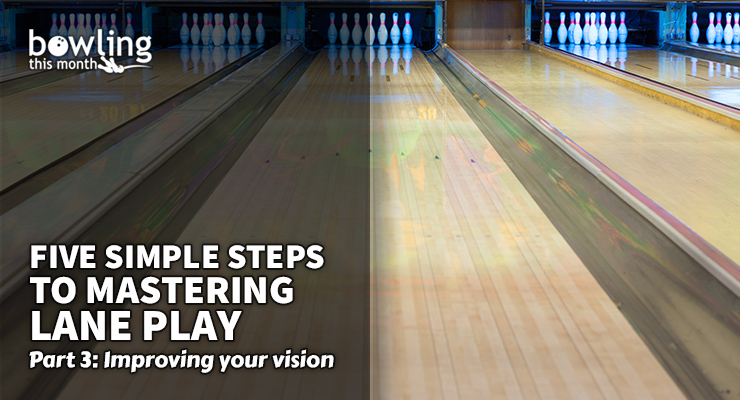Article Contents
- 1. Observing ball motion
- 2. Elements of ball reaction
- 2.1. Improving your front-to-back vision
- 2.2. Improving your side-to-side vision
- 3. Environmental cues
- 3.1. Front-to-back cues
- 3.2. Side-to-side cues
- 4. Making adjustments
Note: This article is only available to Bowling This Month subscribers.
Developing a good “feel” for the lanes is not about feel at all. It’s about allowing your unconscious mind—your gut—to make decisions based on all of the sensory input you are receiving, primarily from what you are seeing. Before bowlers can learn to trust their gut, they need to learn to observe ball motion, see the environmental cues, and understand the appropriate responses. This is what I mean by improving your vision.
When I used to run a pro shop, I’d often get the question, “What do I do to stop leaving the 10 pin?” At first, I’d answer with a question: “What kind of 10 pin was it?” I soon learned that many bowlers weren’t paying attention to anything except the final result of the shot. Thus began my journey into guiding bowlers how to watch ball reaction, what to look for when the ball hits the pins, and what to do about it. Once you know yourself and your equipment, improving your vision will give you everything you need to put those physical versatility skills and bowling balls to good use.
Observing ball motion
If you’ve gone through the first two steps of this process, you’ve already spent some time studying ball motion. When going through the process of knowing yourself, you’ll get the chance to observe the effects of skill manipulation on ball motion. When going through the process of knowing your equipment, you’ll observe the effects of the ball’s surface, coverstock type, and core.
Even though the majority of the work during these steps is learning through observation, the final test of competition readiness is the application of your physical skills or bowling ball knowledge. This implies a certain level of vision and understanding, but doing it in practice—particularly at a home center—is always easier than doing it under pressure in competition. With that in mind, let’s break down some of the most important elements of ...
Already a premium member? Click here to log in.


